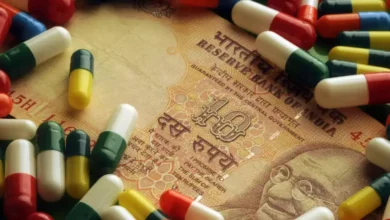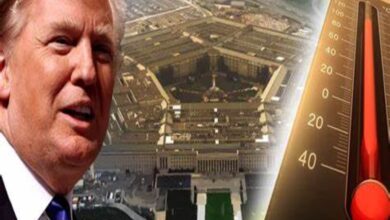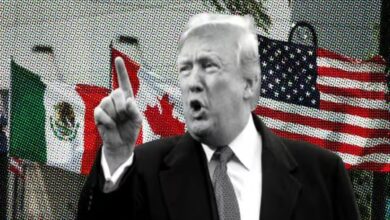People up in arms in many parts of the world, protests mark the beginning of the year 2021; an indication of mass uprising and revolt?

Not just India, but other countries in the world too are in the midst of people unrest. The year 2020 was characterized as the year of self-restraint, isolation, and mass lockdowns.
However, the trend seems to have very much reversed at the beginning of 2021, even as the government’s and the medical fraternity around the world are sounding the bell that the Covid -19 pandemic is not over yet.
India has been witnessing the Farmers’ unrest on account of the three agricultural reform bills introduced by the BJP government, wherein social distancing norms and the Coronavirus pandemic has taken a back seat, even as the deadlock between the protesting farmers and the ruling government has now entered the fifth month.
India is said to have hit a Technical Recession; the economy, which was already on a downward spiral, was hit further because of the nationwide lockdown; the Banking system faces its own set of problems, which have been prevalent in the sector for a while now.
Health Care is another sector that is in need of immediate reforms as the Coronavirus pandemic exposed the vulnerability and the ill-equipped health infrastructure.
The many sectors within the markets are crying out for handouts and help from the government, especially the service sector that has been hit the maximum and worst when it comes to losses.
Worldwide – countries have been hit with their respective problems, some of which have been prevailing for a long time now only to gain more momentum as people at large are currently looking for solutions more than ever from their respective ruling governments and their current policies.
The long-debated issues, the prevailing problems, and the cracks in administration are getting wider even as it has led for the people in these countries to come out in protest in one form or the other against the respective governments, determined to be heard.
Lebanon, in chaos and burning again.
The Lebanon crisis has been ongoing for several years now. But since 2019, continuing into 2020 and still gaining momentum in 2021, the country has been hit particularly hard.
Lebanon has 18 officially recognizes religious groups, which include the Muslim sect, the Christian sect, the Druze sect, and the Judaism sect.
The country follows a sectarian political system because of the Taif agreement – 1989; under the agreement, it enshrines sect – based political system, which means that the political authority is allocated based on the public servant’s religious affiliation. Those serving based on the above affiliation enjoy tremendous power and lack of accountability.
Lebanese people have been living a harsh, hard life; the electricity that is taken for granted as a basic necessity is almost non – existent in Lebanon since 1975. Hence, for 24 hours of electricity, one has to deal with the country’s “generator mafia.”
Drinking water can only be accessed through purchased bottled water, which is in private companies’ hands since the 1975 – 1990 Lebanese civil war.
Lack of sanitation and sewage infrastructure led to the 2015 “garbage crises,” which again sparked mass protests.
The country has been in financial, political, and social turmoil for long now, and many have lost hope that the crises – wracked country’s situation will improve even in 2021.
The young and the aged population in the country show alarming levels of depression and anxiety, and post-traumatic stress after the Beirut Port blast.
The food prices are escalating due to the government not paying the Eurobonds, because of which the food products are priced according to the banks’ dollar exchange rate.
Many want their children to leave the country in hopes of better life prospects abroad as, according to many, the future in Lebanon is “dark.”
The Dutch Riots
The people in the Netherlands are protesting against the government imposition of a curfew on 23 rd January 2021, specifically between 21:00 -4:30 as governments’ Covid -19 prevention measures.
The government’s decision gave way to mass-scale riots, with the police describing the riots as the “worst riots” since the 1980 coronation riots.
The Netherlands has been in the grip of the Coronavirus, and the infections are not declining fast enough. Also, the more transmissible variant of the virus is continuing to spread across the country, which has raised concerns about a “third wave” of infections.
The country started with non – violent protests, but soon the protests turned ugly after the government announced fresh restrictions. Protests in Amsterdam and Eindhoven escalated into violent riots in response to police intervention.
The Poland Riots
The women in Poland, along with those against the tightening of abortion law in Poland, have given way to women’s strike protests in the country.
The government’s new ruling has made almost all cases of abortion illegal, including cases in which the fetus has a severe and permanent disability, incurable and life-threatening disease.
These protests are the biggest since the end of the Peoples Republic during the revolutions in 1989, which were due to the Roman Catholic Church’s interference in public matters and opposed the domination of all three branches of government by the ruling coalition.
The protest against the abortion law started in October 2020 and has gained momentum even as a new year begins.
The government has not been able to calm the tendering nerves of those protesting even as it sounded an alarm of arrests and charges of “causing danger to the life and health of many people by causing epidemiological threat.”
As it turns out, the world is not just facing a pandemic, but many regions and countries are also tackling issues that have been long prevalent in its recent history.
While some of the countries face protests due to fresh lockdown restrictions, others face hostility and demonstrations from their citizens on factors further complicated and in combination with the Coronavirus pandemic.
Perhaps it is the first time in the history of the world, the administration and the citizens are battling a war on all fronts.




